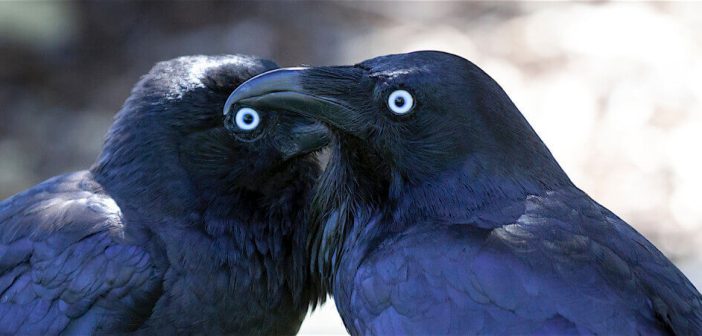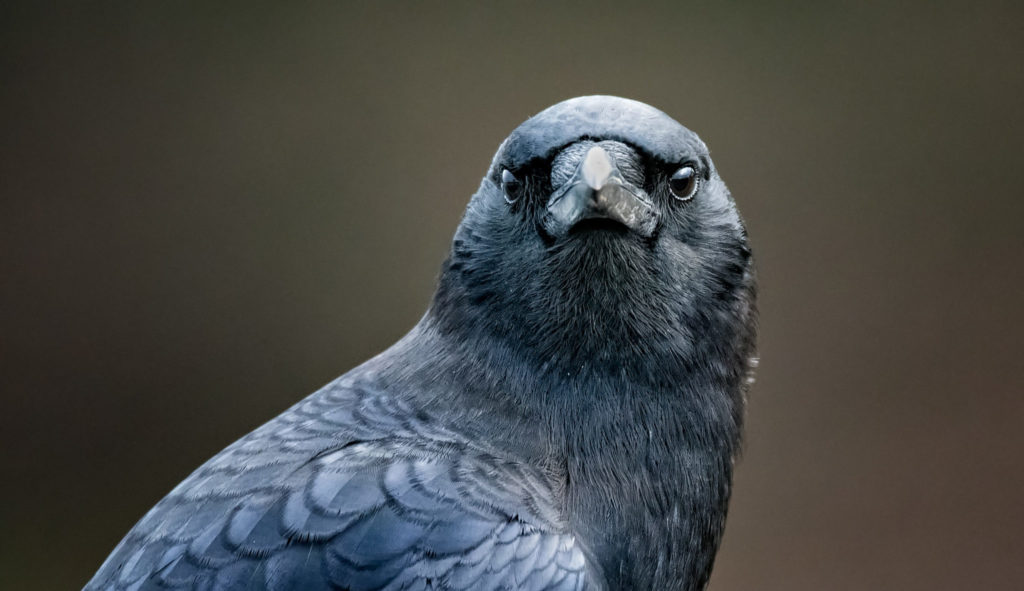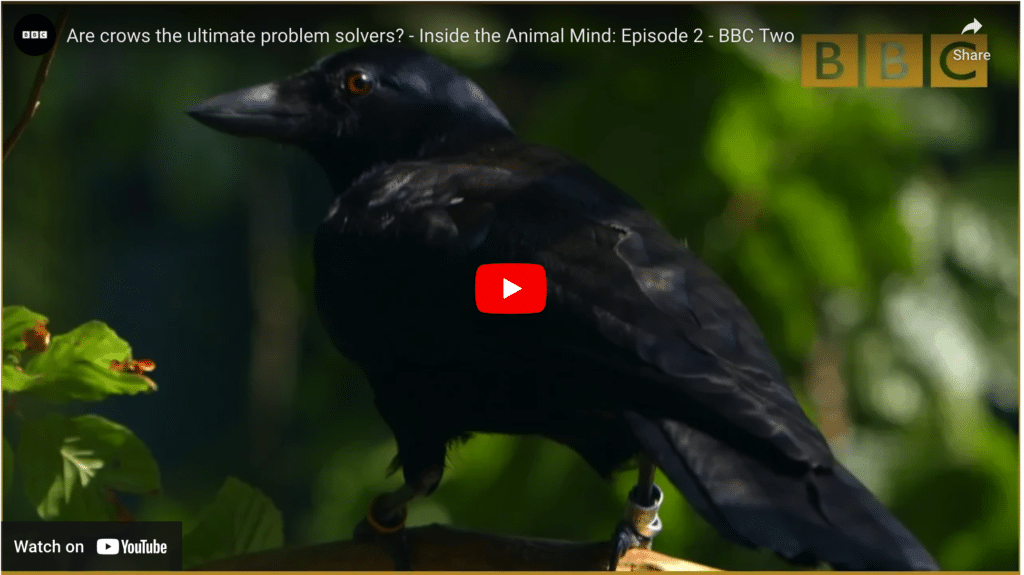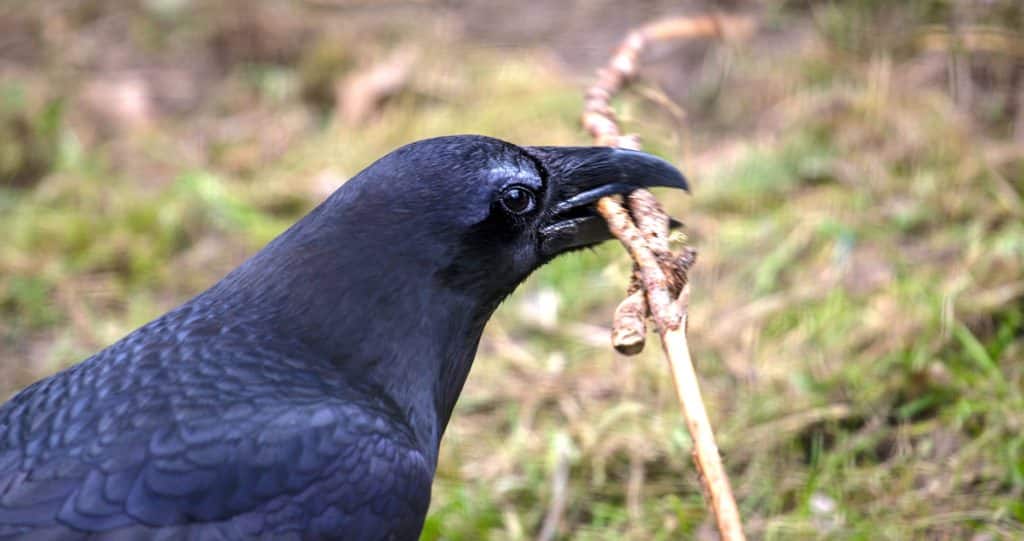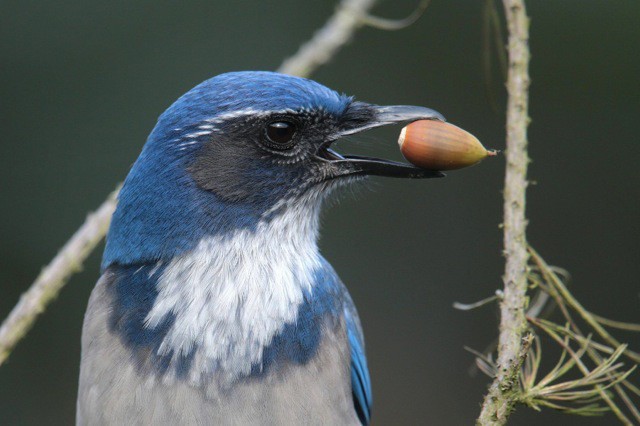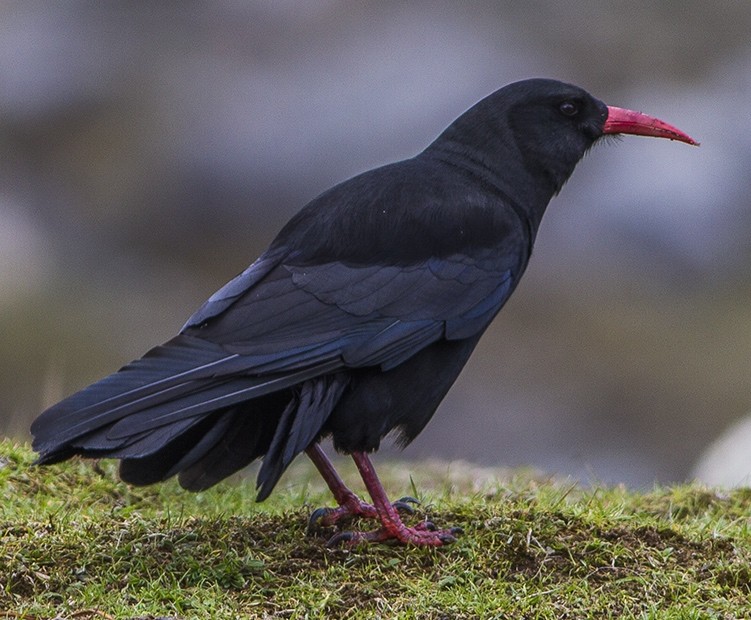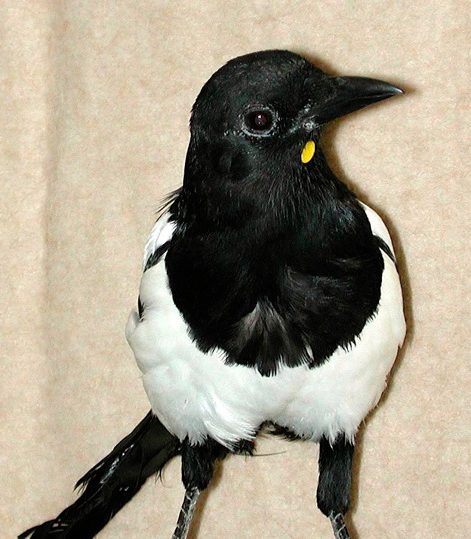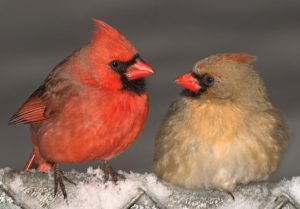Move over, humans! A particular group of birds has turned “birdbrain” from an insult into a compliment. Get ready to meet the world’s smartest birds.
Louis Lefebvre, a behaviorist at McGill University in Montreal studying bird intelligence, has developed a test for gauging bird IQ. It’s based on how innovative birds are when faced with different challenges.1 His winner for the smartest bird of all is the American Crow (also called the Common Crow), and other researchers agree.2
The American Crow, however, is just the smartest in a whole family of whip-smart birds. The family is called Corvidae and consists of ravens, rooks, jays, nutcrackers, magpies, jackdaws, choughs, and treepies. Controlled lab studies and thousands of observations in the wild have shown how remarkably advanced these birds are in their problem-solving skills.
Corvidae—corvids, for short—consists of twenty-three genera containing about 126 species. They’re found everywhere in the world except Antarctica, and some likely visit your own backyard.
CROWS
Crows are second only to humans in intelligence. Their brain-to-body weight ratio equals that of the great apes and cetaceans (whales, dolphins, porpoises). Crows can reason, understand causality and the concept of zero, vocally count up to four, remember human faces, and make customized tools. Here’s one solving a puzzle that required eight steps:
Hooded Crows, Corvus cornix, in Israel, use bread crumbs to bait fish, and in Norway and Sweden, they drag fishing lines out of the water to get at the hooked fish. New Caledonian Crows, Corvus moneduloides, are famous for their innovations and tool-making, including “knives” made of stiff leaves.
In Japan, Carrion Crows, Corvus corone, drop hard-to-crush nuts on the roadway at intersections so that moving traffic will crush them open. That may not seem so spectacular, but the crows also wait for the traffic light to change to red and then walk out in front of the stopped traffic to gather the nuts! Watch them here
There are about thirty-two crow species, plus several subspecies. Two species inhabit the United States: the American Crow, shown above, and the Fish Crow. The Northwestern Crow, once considered a separate species, was absorbed into the American Crow in 2020 by the American Ornithological Society because interbreeding over thousands of years has made them indistinguishable. Another species, the Hawaiian Crow, is extinct in the wild but can be seen at the San Diego Zoo, where a captive breeding program is ongoing.
RAVENS
Ravens are only minutely less intelligent than crows. They’re cooperative hunters who often work in pairs—one to distract a bird or mammal parent and the other to grab the bird’s egg or newborn offspring. Recent research3 has shown they’re more technically successful in planning ahead than 4-year-old children. They’re also known for their ability to understand cause and effect and to solve increasingly complicated problems. One researcher reports observing a raven who would carry away a large chunk of frozen suet by first using its beak to carve a circle around the entire chunk it wanted instead of chipping away at it for numerous small pieces.4 You’ll see in this video a wild raven who correctly reasoned that humans could help it solve a serious problem.
Ravens are in the genus Corvus, along with crows. There are ten raven species in the world, plus a couple of subspecies. Two species inhabit the U.S., the Common Raven, Corvus corax, and the Chihuahuan Raven, Corvus cryptoleucus.
JACKDAWS
Jackdaws are the smallest birds in Corvus, but that doesn’t mean they lack any brain power. They’re the only non-primates known to communicate with each other using their eyes. They have complex social and food-sharing behavior and are known to care for injured relatives. They can also interpret human communicative gestures to find hidden food, such as when a human gazes at food or points to it. Jackdaws are highly curious, fond of bright, shiny things, and may sometimes carry them away. In England and Wales, they’re known to remove caps from full bottles of delivered milk sitting on porches and drink from the contents! Jackdaws are easily trained to perform tricks and to speak, and they’ve been observed using tools. Some populations follow deer herds and pluck their hair for nests.
Two jackdaw species exist, the Western Jackdaw, shown above, which inhabits Europe, Asia, and North Africa, and the Daurian Jackdaw, Corvus dauuricus, which occupies Russia. There are also several subspecies.
JAYS
Jays are boisterous, energetic, and noticeably intelligent. Scrub jays are particularly interesting as the only animals besides humans that plan their actions based on how they’ll feel in the future. Studies have shown they decide what kind of food they’ll want for breakfast the following day, how much, and where they’ll consume it. Then they store away the right amount in the right place.5 Another example of jay intelligence is a captive Blue Jay who used a scrap of paper from the bottom of his cage as a tool to reach a pile of food outside it. Other jays who watched him soon were using the same method.
There are around forty species of jays in the world, and they’re everywhere except the high Arctic, Antarctica, the tip of South America, and New Zealand. The U.S. has eight species: the Gray Jay, Perisoreus canadensis; Green Jay, Cyanocorax yncas; Pinyon Jay, Gymnorhinus cyanocephalus; Steller’s Jay, Cyanocitta stellen; Blue Jay, Cyanocitta cristata; Florida Scrub-jay, Aphelocoma coerulescens; Western Scrub-jay, Aphelocoma californica; and Mexican Jay, Aphelocoma wollweberi.
NUTCRACKERS
Nutcrackers are noted for their remarkable ability to remember things about their environment and their orientation within it. For example, Clark’s Nutcrackers, shown above, feed on pine seeds, and every summer, they hide up to 30,000 seeds in preparation for winter—and laboratory tests show they remember where almost all of them are!6 Each cache contains one to three seeds, so that’s about 10,000 to 15,000 different locations. Since they live in areas with lots of snowfall that hides landmarks, they’re all the more amazing because they can figure out where their caches are and will burrow under the snow to reach them.
CHOUGHS
Choughs (pronounced, “chuffs “) perform spectacular aerial displays that include tumbling, twisting, folding their wings, and zooming downward until the very last moment before they’d hit the ground. In Australia, White-winged Choughs, Corcorax melanorhamphos, use tools to open hard-shelled gastropods. There are two species, easily told apart: the Red-billed, Pyrrhocorax pyrrhocorax, and the Yellow-billed, P. graculus, plus several subspecies. Choughs inhabit Europe, Asia, and Africa.
TREEPIES

White-bellied Treepies, Dendrocitta leucogastra, like all treepies, are agile and acrobatic. (Mike Prince / Flickr; CC BY-NC-SA 2.0)
Treepies (pronounced “tree-pies”) are eleven species that inhabit Southeast Asia. Smart, adaptable, agile, and acrobatic, they tend to live in small flocks when not in the breeding season. They’re adept at mimicking other birds. The “pie” in their name refers to the black-and-white “pied” plumage many of them have.
MAGPIES
Magpies (pronounced mag-pies) can recognize themselves in a mirror. The only other animals known to share this ability are Chimpanzees, dolphins, elephants, Giant Manta Rays, and humans of about two years of age and older. (Click here to watch “Gertie,” a Eurasian Magpie who looks at herself in a mirror, notices a spot on her throat put there by a researcher and tries to remove it.) Magpies are also capable of playing a game of hide-and-seek with performance comparable to that of 3-to-5-year-old children. Magpies have complex emotions and are known for holding “funerals” for a fallen friend, including “bouquets” of grasses.8 Here’s Rooney, an adorable and very verbal magpie.
Like treepies, the “pie” in their name refers to the black-and-white, or “pied,” plumage many of them have. By the way, not all birds with the word “magpie” in their name are corvids; for example, the Magpie Goose, Magpie Shrike, and the Australian Magpie aren’t corvids. The U.S. has two species of true magpies: the Black-billed, Pica hudsonia, and the Yellow-billed, Pica nuttalli. There are eleven other species in the world, all of which inhabit Europe and Asia.
| 1 Natural Sciences And Engineering Research Council, “Bird IQ Test Takes Flight,” ScienceDaily, February 24, 2005, https://bit.ly/3NuY41z. |
| 2 Stymacks, Amelia, “Why Ravens and Crows Are Earth’s Smartest Birds,” National Geographic, March 15, 2018. |
| 3 Montanari, Shaena, “We Knew Ravens Are Smart. But Not This Smart,” National Geographic, July 13, 2017. |
| 4 “Discover the Brainpower of the Bird in Black,” Nature, S20 EP4, June 10, 2008. |
| 5 “Western Scrub Jay,” The National Wildlife Federation. |
| 6 Connor, Jack, “How Clark’s Nutcrackers Find Buried Seeds Under a Blanket of Snow,” AllAboutBirds.com, October 15, 2013. |
| 7 Prior H, Schwarz A, Güntürkün O, “Mirror-Induced Behavior in the Magpie (Pica pica): Evidence of Self-Recognition,” PLoS Biol 6(8): e202. doi:10.1371/journal.pbio.0060202, 2008, PD) |
| 8 Kaplan, Gisela,TheConversation.com. |
Birds gone bald!
Wildlife on the edge
No spring in the step of hungry spring birds!
In your yard: 27 birds to look for

